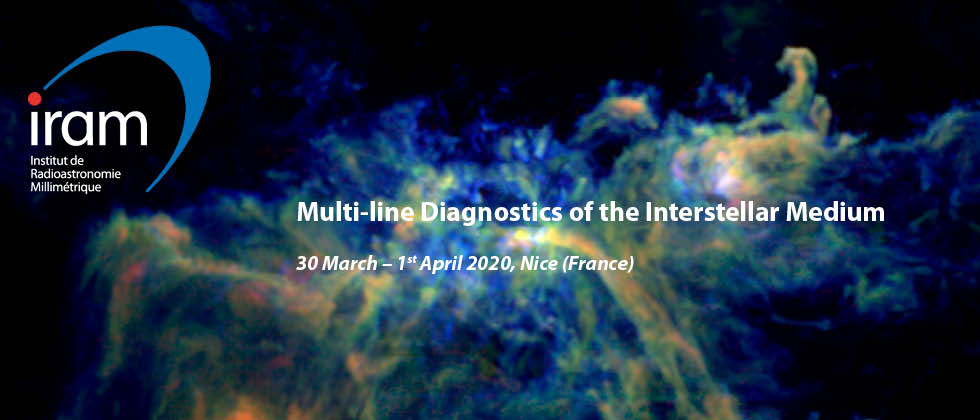
|
|
|
Main menu
HELP
|
Homepage
Multi-line Diagnostics of the Interstellar Medium 30 March - 1st April 2020 Hotel Le Saint Paul, Nice, France
Due to the COVID-19 pandemic, the conference has been postponed. The new dates are from 4th - 6th of April 2022. Please register here: https://iram2022nice.sciencesconf.org/
Key dates Registration and submission opening: 23 September 2019 Abstract submission deadline: 2 December 2019 Notification of talk selection: 29 January 2020 Late registration deadline: 1st of March 2020
The conference program is now available: detailed version or overview.
After the conference, the selected contributions will be published in proceedings which will be referenced in ADS.
Science rationale Recent advances in broad band millimeter and submillimeter instrumentation, as well as modelling and laboratory measurements have changed the nature of research on interstellar matter. With modern observatories one can now measure a vastly increased number of lines from a great number of molecular and atomic species simultaneously with high sensitivity and high spectral and spatial resolution. Spectroscopic data will also be available over rapidly increased fields by means of multi-beam instruments or interferometric mosaicking and on-the-fly imaging techniques. Current and upcoming modeling and analysis methods including statistical treatments of large data sets and source surveys will also open new opportunities.These facts will form the basis for the next crucial steps towards a global description of cold and warm interstellar matter responsible for star and planet formation on local and cosmological scales. Modern multi line observations have the power to grasp molecular complexity to its full extent and its dependence on local conditions, to determine physicochemical processes within and potentially also to reconstruct the history of the interstellar medium (ISM). This increased understanding will provide a quantitative foundation for sources where fewer detectable lines are available, such as in high-redshift galaxies. Comparisons to dust emission and multi-wavelength studies will pin down key parameters such as metallicity, temperature, density, and radiation fields. All these advances will lead to the possibility to understand structure formation from cosmological scales down to the circumstellar environment in greatly enhanced detail. The conference aims to bring together scientists from a wide interdisciplinary community to address recent advances, current challenges and future directions in the field. The conference will feature three days of contributed and invited talks as well as posters on the topic of multi-line observations, analysis and modeling research - star formation at different scales - galaxy formation and feedback through cosmic time - ISM chemical complexity in the nearby and high-redshift universe - shaping the ISM with stellar feedback - new approaches to exploit the unique capabilities of the IRAM facilities
|
| Online user: 2 | Privacy |

|


